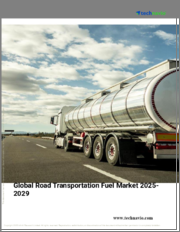
|
시장보고서
상품코드
1568893
도시 모빌리티의 비전(2050년)The 2050 Vision of Urban Mobility |
||||||
기술 동향과 발전, 그리고 2050년까지 교통을 어떻게 변화시킬 것인가?
Frost & Sullivan의 이번 분석은 현재 기술 동향과 향후 개발될 수 있는 기술의 영향을 받아 2050년까지 모빌리티 시장이 어떻게 진화할 것인지에 대해 살펴봅니다. 이번 조사에서는 공유 모빌리티가 나아갈 길에 대해 세 가지 시나리오를 제시하고 각 시나리오에 대해 자세히 분석합니다. 분석 범위는 전 세계를 대상으로 합니다.
공유 모빌리티 산업은 미래의 성공 여부가 기술뿐만 아니라 여러 요인에 의해 좌우되는 단계에 있습니다. 새로운 소비자 행동, 정부가 도입할 수 있는 규제, 달성해야 할 목표와 벤치마크에 적응해야할 것으로 보입니다. 이러한 요소들이 주요 성장 요인이지만, 모빌리티가 어떻게 작동하고 사용자 및 도시 환경과 어떻게 상호작용하는지를 결정하는 것은 경제성과 기술 발전이며, 2050년까지 새로운 기술 혁신이 모빌리티 산업을 크게 변화시킬 것으로 예상됩니다.
이 분석은 이러한 모든 요인을 고려하여 각 시나리오의 사용자 여정, 이해관계자 생태계, 다양한 요소에 대한 심층 분석을 포함하여 세 가지 가능한 시나리오를 구체화했습니다. 이해관계자 및 시장 관계자들이 활용할 수 있는 시장 개발로 인한 기회를 분석합니다.
목차
전략적 과제
- 왜 성장이 어려워지고 있는가?
- The Strategic Imperative 8(TM)
- 도시 모빌리티 2050년 비전에 대한 상위 3개 전략적 중요 사항의 영향
- Growth Pipeline Engine(TM)를 지지하는 성장 기회
성장 기회 분석
- 2050년 동향 예측
- 미래 도시에 출현하는 주요 동향
- 성장 촉진요인
- 성장 억제요인
- 사례 연구 - 싱가포르
- 미래 도시
- 심리스 시티의 정의
- 기술 벤치마크 : 심리스 시티 시나리오, 2024년·2050년
- 인프라 벤치마크 : 심리스 시티 시나리오, 2024년·2050년
- 소비자 행동 벤치마크 : 심리스 시티 시나리오, 2024년·2050년
- 규제 벤치마크 : 심리스 시티 시나리오, 2024년·2050년
- 지속가능한 도시의 정의
- 기술 벤치마크 : 지속가능 도시 시나리오, 2024년·2050년
- 인프라 벤치마크 : 지속가능한 도시 시나리오, 2024년·2050년
- 소비자 행동 벤치마크 : 지속가능한 도시 시나리오, 2024년 및 2050년
- 규제 벤치마크 : 지속가능한 도시 시나리오, 2024년·2050년
- 기술 주도형 도시의 정의
- 기술 벤치마크 : 기술 주도형 도시 시나리오, 2024년·2050년
- 인프라 벤치마크 : 기술 주도형 도시 시나리오, 2024년·2050년
- 소비자 행동 벤치마크 : 기술 주도형 도시 시나리오, 2024년·2050년
- 규제 벤치마크 : 기술 주도형 도시 시나리오, 2024년·2050년
심리스 시티 에코시스템
- 심리스 시티 : 이해관계자의 에코시스템
- 심리스 시티 : 테크놀러지
- 심리스 시티 : 소비자 행동
- 심리스 시티 : 인프라
- 심리스 시티 : 규제
지속가능한 도시 에코시스템
- 지속가능한 도시 : 이해관계자의 에코시스템
- 지속가능한 도시 : 테크놀러지
- 지속가능한 도시 : 소비자 행동
- 지속가능한 도시 : 인프라
- 지속가능한 도시 : 규제
테크놀러지 주도형 도시 에코시스템
- 기술 주도형 도시 : 이해관계자의 에코시스템
- 기술 주도형 도시 : 테크놀러지
- 기술 주도형 도시 : 소비자 행동
- 기술 주도형 도시 : 인프라
- 기술 주도형 도시 : 규제
성장 기회
- 성장 기회 1 : 모빌리티을 위한 인공지능
- 성장 기회 2 : 탄소 신용
결론
- 기술 이치
- 결론
- 도표
- 면책사항
Technological Trends and Advancements and How They Will Transform Transportation by the Year 2050
This Frost & Sullivan analysis examines how the mobility market will evolve by the year 2050, influenced by the technological trends of the present day and technologies that might be developed in the future. This examination presents three different scenarios for the path that shared mobility may take and analyzes each of these scenarios in detail. The scope of the analysis is global.
The shared mobility industry is at a point where its future success depends on several factors that go beyond technology. It will have to adapt to new consumer behaviors, regulations that governments may introduce, and targets and benchmarks to be reached. While these are the main growth factors, economic viability and technological progress will determine the way mobility works and how it interacts with users and the urban environment. By 2050, new technological breakthroughs will transform the industry substantially.
This analysis considers all these factors to elaborate three possible scenarios, including each scenario's user journey, stakeholder ecosystem, and a deep dive into various elements. Frost & Sullivan examines the factors driving and restraining growth in this space and analyzes the opportunities emerging from market developments for stakeholders and market players to leverage.
Table of Contents
Strategic Imperatives
- Why is it Increasingly Difficult to Grow?
- The Strategic Imperative 8™
- The Impact of the Top 3 Strategic Imperatives on the 2050 Vision of Urban Mobility
- Growth Opportunities Fuel the Growth Pipeline Engine™
Growth Opportunity Analysis
- 2050 Trend Forecasts
- Key Trends Emerging for the City of the Future
- Growth Drivers
- Growth Restraints
- Case Study-Singapore
- Future Cities
- Seamless City Scenario-Definition
- Technology Benchmarking-Seamless City Scenario, 2024 and 2050
- Infrastructure Benchmarking-Seamless City Scenario, 2024 and 2050
- Consumer Behavior Benchmarking-Seamless City Scenario, 2024 and 2050
- Regulations Benchmarking-Seamless City Scenario, 2024 and 2050
- Sustainable City-Definition
- Technology Benchmarking-Sustainable City Scenario, 2024 and 2050
- Infrastructure Benchmarking-Sustainable City Scenario, 2024 and 2050
- Consumer Behavior Benchmarking-Sustainable City Scenario, 2024 and 2050
- Regulations Benchmarking-Sustainable City Scenario, 2024 and 2050
- Tech-driven City-Definition
- Technology Benchmarking-Tech-driven City Scenario, 2024 and 2050
- Infrastructure Benchmarking-Tech-driven City Scenario, 2024 and 2050
- Consumer Behavior Benchmarking-Tech-driven City Scenario, 2024 and 2050
- Regulations Benchmarking-Tech-driven City Scenario, 2024 and 2050
Seamless CityEcosystem
- Seamless City-Stakeholder Ecosystem
- Seamless City-Technology
- Seamless City-Consumer Behavior
- Seamless City-Infrastructure
- Seamless City-Regulations
Sustainable CityEcosystem
- Sustainable City-Stakeholder Ecosystem
- Sustainable City-Technology
- Sustainable City-Consumer Behavior
- Sustainable City-Infrastructure
- Sustainable City-Regulations
Tech-driven City Ecosystem
- Tech-driven City-Stakeholder Ecosystem
- Tech-driven City-Technology
- Tech-driven City-Consumer Behavior
- Tech-driven City-Infrastructure
- Tech-driven City-Regulations
Growth Opportunity Universe
- Growth Opportunity 1: Artificial Intelligence for Mobility
- Growth Opportunity 2: Carbon Credits
Conclusion
- Technology Pathway
- Conclusion
- List of Exhibits
- Legal Disclaimer



















